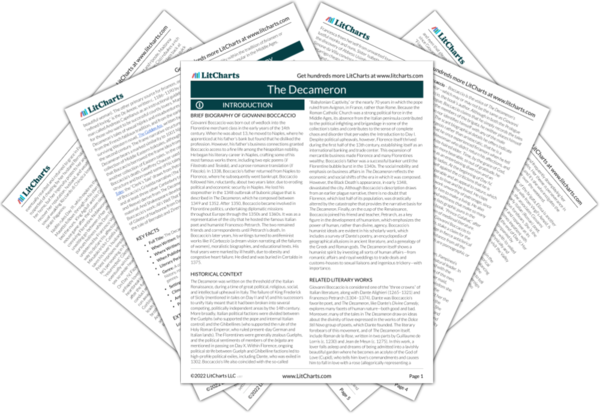In Filostrato’s third tale (III, 1), the Abbess is a poor example of religious leadership when she joins the Young Nuns in taking Masetto as her lover and hides the resulting children from the world. She thus contributes to The Decameron’s anticlerical satire, particularly in the hypocritical delight she takes in an unnamed sexual pleasure that she had previously sharply criticized.
